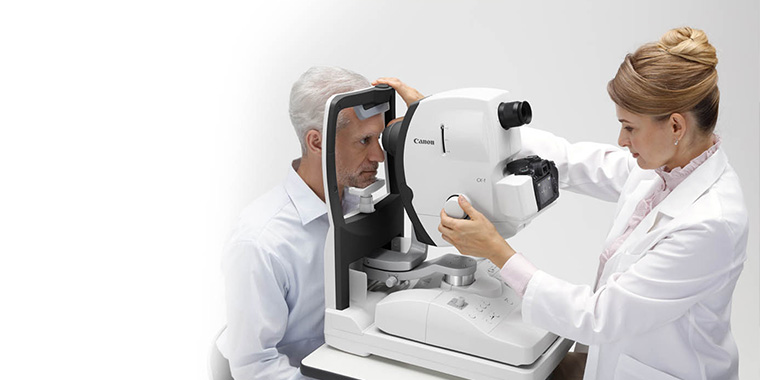Exploring the State-of-the-Art Technologies Used for Identifying and Dealing With Eye Problems
In the realm of ophthalmology, the advancement of technology has actually considerably boosted the devices available for identifying and dealing with numerous eye conditions. From sophisticated imaging modern technologies that provide thorough insights into ocular frameworks to robotic-assisted medical treatments that offer exceptional accuracy, the landscape of eye treatment is frequently evolving.

Advanced Imaging Technologies
Advanced Imaging Technologies have reinvented the area of ophthalmology by providing in-depth and specific visualization of the eye structures. This non-invasive method help in the very early discovery and monitoring of numerous eye conditions such as macular degeneration, diabetic retinopathy, and glaucoma.
Moreover, Fundus Digital photography is an additional important tool in sensory imaging. This method includes catching thorough pictures of the rear of the eye, consisting of the retina and optic disc. Fundus Digital photography assists in documenting the progression of eye diseases, evaluating treatment efficacy, and educating people about their eye health.

Robotic-Assisted Surgery
Robotic-assisted surgeries have significantly advanced the capabilities of ophthalmic surgical treatment, introducing a new age of precision and effectiveness in treating various eye conditions. By integrating robot modern technology right into surgeries, ophthalmologists can accomplish unequaled precision and control, causing enhanced client outcomes.
One of the key advantages of robotic-assisted surgical treatment in ophthalmology is the improved dexterity and stability it supplies to doctors. The robot arms can carry out precise movements with a high level of accuracy, enabling for delicate procedures with minimal invasiveness. This degree of accuracy is particularly advantageous in surgeries entailing the retina, where even minor mistakes can have considerable implications for a person's vision.
Additionally, robotic-assisted medical systems offer real-time imaging and feedback to the doctor, enabling them to make enlightened choices during the treatment. This technology boosts the cosmetic surgeon's situational awareness and allows for changes to be made immediately, ensuring optimum results for the person.
Expert System in Diagnostics
With the advancement of advanced modern technologies improving medical precision in ocular treatments, the integration of Artificial Knowledge in diagnostics has arised as a pivotal advancement changing the field of eye treatment. Expert System (AI) formulas are being increasingly utilized to assess complex information from imaging modern technologies like optical coherence tomography (OCT) and fundus digital photography to aid in the early detection and exact medical diagnosis of various eye problems. These AI systems can successfully recognize patterns and anomalies in pictures that might not be noticeable to the human eye, enabling quicker diagnosis and therapy preparation.
AI algorithms can likewise anticipate condition development, advise tailored therapy strategies, and analyze the effectiveness of treatments. By streamlining the diagnostic procedure, AI not just boosts the performance of eye care professionals but also improves patient outcomes by enabling prompt treatments. As AI remains why not look here to development, its function in diagnostics is expected to expand, supplying brand-new opportunities for very early intervention and customized treatment in the area of ophthalmology.
Genetics Therapy Developments
In the realm of ocular developments, current strides in genetics therapy innovations have actually stimulated considerable interest amongst click site scientists and healthcare professionals alike. Genetics therapy holds enormous pledge in transforming the therapy of different eye problems by targeting the hidden hereditary causes. By introducing genetic product into cells to make up for abnormal genes or to supply a missing genetics, gene treatment uses a customized approach to resolving inherited eye disorders such as retinitis pigmentosa, Leber hereditary amaurosis, and others that were previously considered untreatable.

As study in gene therapy remains to development, the capacity for tailored therapies for a broader variety of eye problems grows, offering brand-new expect patients with hereditary eye diseases.
Digital Truth Rehabilitation
Digital truth recovery has become a cutting-edge technique in enhancing the recovery link and recovery processes for people with various aesthetic impairments. retina service near me. By imitating real-world settings via immersive modern technology, virtual fact offers an one-of-a-kind platform for vision treatment and recovery. This ingenious approach allows people to participate in interactive exercises and tasks made to improve aesthetic skill, depth understanding, eye control, and overall aesthetic performance
One key advantage of digital reality rehab is its capability to tailor treatment programs based upon the particular demands and capacities of each client. With real-time responses and monitoring, healthcare experts can track progression, readjust interventions, and offer individualized like optimize outcomes. In addition, virtual reality innovation can produce a secure and regulated space for individuals to practice visual tasks, conquer difficulties, and develop self-confidence in a virtual setup prior to transitioning to real-world circumstances.
Verdict
Finally, the developments in imaging innovations, robotic-assisted surgical treatments, man-made knowledge diagnostics, gene therapy developments, and online truth rehabilitation have substantially improved the medical diagnosis and therapy of eye conditions. cataract care service. These modern modern technologies have actually reinvented the field of ophthalmology, enabling more effective and precise procedures. As technology continues to develop, the future of eye care looks encouraging with the possibility for much more innovative solutions to boost individual results
In the realm of ophthalmology, the advancement of innovation has dramatically boosted the tools readily available for diagnosing and dealing with numerous eye problems. Fundus Photography assists in recording the progression of eye illness, examining treatment efficiency, and informing patients concerning their eye health and wellness.
Fabricated Intelligence (AI) algorithms are being increasingly used to analyze intricate data from imaging modern technologies like optical coherence tomography (OCT) and fundus digital photography to help in the very early detection and exact medical diagnosis of various eye conditions.In final thought, the developments in imaging technologies, robotic-assisted surgical treatments, synthetic knowledge diagnostics, gene therapy developments, and online truth rehabilitation have actually substantially improved the diagnosis and therapy of eye conditions. As modern technology proceeds to develop, the future of eye treatment looks promising with the capacity for also more innovative services to boost client results.